
Pisa: Where History Leans into Modernity
Discover Pisa: Beyond the Leaning Tower lies a vibrant city rich in history, culture, and Italian charm, set in the picturesque heart of Tuscany.
Pisa, nestled in the heart of Tuscany, is world-renowned for its iconic Leaning Tower. This architectural marvel draws millions of visitors each year, eager to capture that perfect tilted snapshot. But Pisa is more than just its famous tower; the city is a treasure trove of history, culture, and art waiting to be explored. Stroll through the Piazza dei Miracoli, also known as the Square of Miracles, where the Leaning Tower stands alongside the grand Pisa Cathedral and the Baptistery. Each of these structures showcases exquisite Romanesque architecture, telling stories of a bygone era. Wander through the lush green lawns of this UNESCO World Heritage site, and you'll feel like you've stepped back in time. Beyond the Square of Miracles, Pisa offers charming streets and lively piazzas filled with cafes, restaurants, and shops. Take a walk along the Arno River, where you can admire beautiful bridges and picturesque views. Don't miss the chance to visit the University of Pisa, one of the oldest universities in the world, which brings a youthful and vibrant energy to the city. Whether you are an art lover, history buff, or simply a traveler in search of new experiences, Pisa provides a delightful blend of past and present. It's a city that invites you to slow down, savor a gelato, and enjoy the rich tapestry of Italian culture.
Local tips in Pisa
- Book tickets online in advance to climb the Leaning Tower to avoid long queues.
- Visit early in the morning or late afternoon to avoid the crowds at the Piazza dei Miracoli.
- Explore Pisa on foot or by bike to truly appreciate its narrow streets and hidden gems.
- Check out the local markets for authentic Italian cuisine and unique souvenirs.
- Take a day trip to nearby towns like Lucca or Florence for a more comprehensive Tuscan experience.
Pisa: Where History Leans into Modernity
Pisa, nestled in the heart of Tuscany, is world-renowned for its iconic Leaning Tower. This architectural marvel draws millions of visitors each year, eager to capture that perfect tilted snapshot. But Pisa is more than just its famous tower; the city is a treasure trove of history, culture, and art waiting to be explored. Stroll through the Piazza dei Miracoli, also known as the Square of Miracles, where the Leaning Tower stands alongside the grand Pisa Cathedral and the Baptistery. Each of these structures showcases exquisite Romanesque architecture, telling stories of a bygone era. Wander through the lush green lawns of this UNESCO World Heritage site, and you'll feel like you've stepped back in time. Beyond the Square of Miracles, Pisa offers charming streets and lively piazzas filled with cafes, restaurants, and shops. Take a walk along the Arno River, where you can admire beautiful bridges and picturesque views. Don't miss the chance to visit the University of Pisa, one of the oldest universities in the world, which brings a youthful and vibrant energy to the city. Whether you are an art lover, history buff, or simply a traveler in search of new experiences, Pisa provides a delightful blend of past and present. It's a city that invites you to slow down, savor a gelato, and enjoy the rich tapestry of Italian culture.
When is the best time to go to Pisa?
Iconic landmarks you can’t miss
Leaning Tower of Pisa
Discover the Leaning Tower of Pisa, a UNESCO World Heritage site, renowned for its architectural charm and historical significance in the heart of Italy.

Piazza del Duomo
Explore the architectural wonders of Piazza del Duomo in Pisa, featuring the iconic Leaning Tower, stunning cathedral, and vibrant atmosphere.
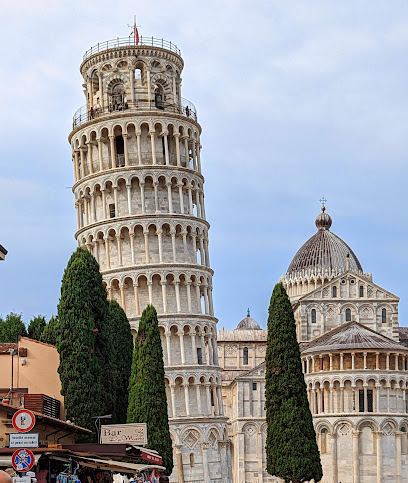
Cattedrale di Pisa
Explore the breathtaking beauty and intricate history of Cattedrale di Pisa, a stunning architectural gem in the heart of Tuscany.

Piazza dei Cavalieri
Discover the historical grandeur of Piazza dei Cavalieri, a captivating plaza in Pisa surrounded by stunning architecture and vibrant local culture.

Chiesa di Santa Maria della Spina
Discover the captivating Chiesa di Santa Maria della Spina in Pisa, a stunning Gothic church along the Arno River, rich in history and artistic beauty.

Battistero di San Giovanni
Discover the architectural wonders of Battistero di San Giovanni, a historic gem in Pisa showcasing exquisite beauty and rich cultural heritage.

Tuttomondo (Keith Haring)
Discover Tuttomondo, Keith Haring's vibrant mural in Pisa, celebrating life, unity, and the joy of human connection in stunning artistic expression.
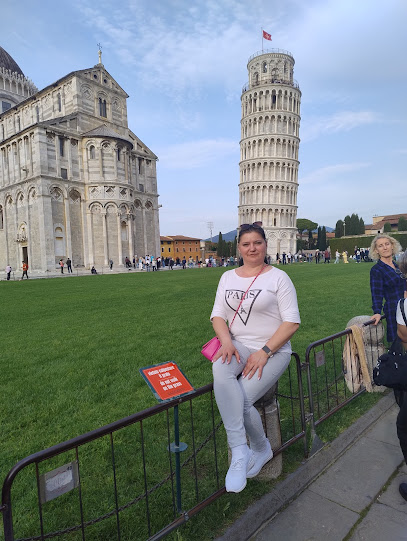
Museo delle Navi Antiche di Pisa
Explore the ancient maritime treasures of Pisa at the Museo delle Navi Antiche, where history comes alive through stunning shipwrecks and fascinating artifacts.
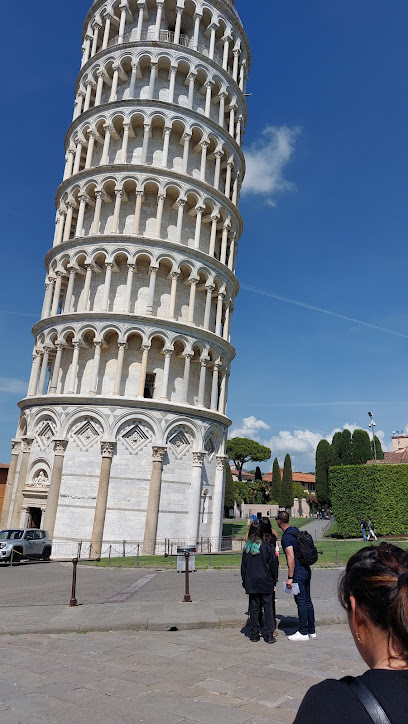
San Piero a Grado
Experience the serene beauty of San Piero a Grado, a historic Catholic church near Pisa, Italy, known for its stunning architecture and rich spiritual heritage.
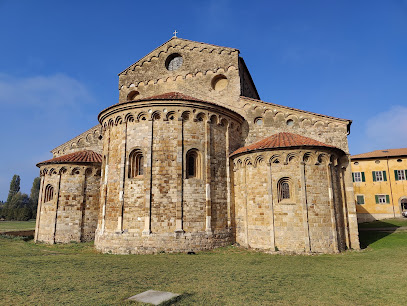
Chiesa di Santa Caterina d'Alessandria
Explore the captivating Chiesa di Santa Caterina d'Alessandria, a serene Catholic church in Pisa rich in history and stunning architectural beauty.
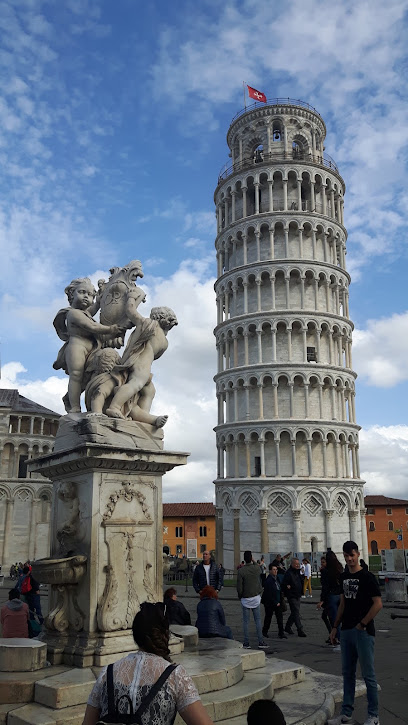
Camposanto
Explore the serene beauty and rich history of Camposanto, Pisa's monumental cemetery, a unique landmark filled with art and tranquility.

Lungarni di Pisa
Discover the enchanting Lungarni di Pisa, where scenic beauty meets rich culture along the Arno River, making it a must-visit destination for tourists.

Sinopie Museum
Explore the Sinopie Museum in Pisa, where the rich heritage of Renaissance art comes alive through unique preparatory sketches.

Chiesa di San Michele degli Scalzi
Explore the historical Chiesa di San Michele degli Scalzi in Pisa, a serene Catholic church filled with artistic treasures and rich cultural heritage.

National Museum of San Matteo
Discover the artistic heritage of Tuscany at the National Museum of San Matteo in Pisa, showcasing timeless masterpieces from the Middle Ages to the Renaissance.

Unmissable attractions to see
Tower of Pisa
Discover the breathtaking Leaning Tower of Pisa, an iconic symbol of Italy, rich in history and architectural beauty in the heart of Tuscany.

Piazza del Duomo
Explore the architectural wonders of Piazza del Duomo, a UNESCO World Heritage site in Pisa, Italy, featuring the Leaning Tower and breathtaking historical sites.

Piazza del Duomo
Explore Piazza del Duomo in Pisa, Italy, home to the iconic Leaning Tower and stunning architectural masterpieces that narrate a rich historical tale.

Terrazza Mascagni
Experience the stunning views of the Mediterranean at Terrazza Mascagni in Livorno, a perfect blend of nature and architecture.

Piazza Napoleone
Discover the vibrant history and charm of Piazza Napoleone, a must-see square in the heart of Lucca, Italy, surrounded by stunning architecture and lively culture.

Cattedrale di Pisa
Explore the stunning Cattedrale di Pisa, a masterpiece of Romanesque architecture and a UNESCO World Heritage Site nestled in the heart of Pisa.
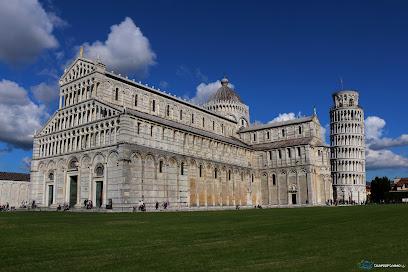
Devil's Bridge
Explore the captivating Devil's Bridge, a historic marvel in Borgo a Mozzano, Italy, renowned for its stunning architecture and enchanting legends.

Duomo di San Martino
Discover the architectural splendor and rich history of Duomo di San Martino, a must-visit cathedral in the heart of Lucca, Italy.
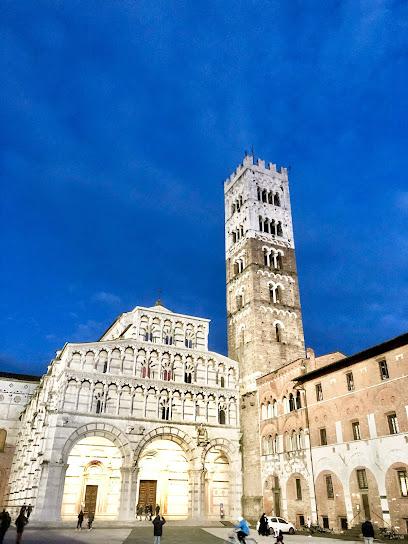
Piazza dei Cavalieri
Discover the historic allure of Piazza dei Cavalieri in Pisa, a stunning square rich in Renaissance architecture and vibrant cultural life.

Museo Leonardiano di Vinci
Discover the genius of Leonardo da Vinci at Museo Leonardiano, a must-visit art museum in the heart of Vinci, Italy, showcasing his remarkable inventions and art.

Mura di Lucca
Explore the historic Mura di Lucca, a stunning Renaissance wall that offers panoramic views of the city and a glimpse into Italy's rich past.

Natural History Museum of the University of Pisa
Explore the Natural History Museum of the University of Pisa, a treasure trove of life’s wonders in the heart of Tuscany.
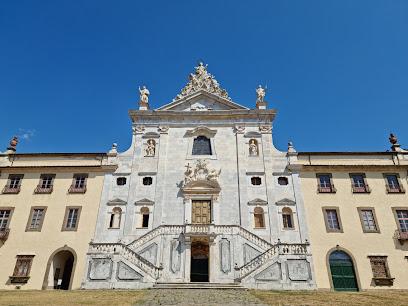
Pinocchio Park
Experience a magical adventure at Pinocchio Park in Pescia, where the beloved tale comes to life with fun attractions and enchanting scenery.

Acquario di Livorno
Explore the aquatic wonders at Acquario di Livorno, a vibrant aquarium showcasing diverse marine life and committed to ocean conservation.
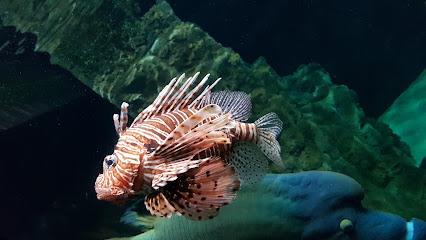
Palazzo Blu
Explore the artistic treasures of Palazzo Blu, an iconic museum in Pisa featuring stunning artworks and breathtaking views of the Arno River.

Essential places to dine
I Porci Comodi
Discover I Porci Comodi in Pisa: where gourmet sandwiches meet local flavors in a cozy fast food setting.

Osteria I Santi
Discover authentic Tuscan cuisine at Osteria I Santi in Pisa—where every dish tells a story and every meal is a celebration.
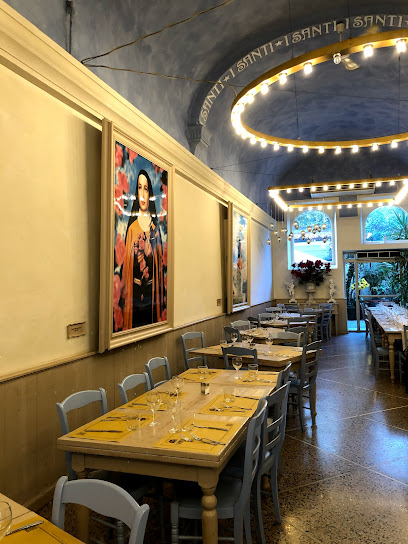
L'Ostellino
Discover authentic Italian flavors at L'Ostellino in Pisa – where delicious sandwiches meet warm hospitality.

La Ghiotteria
Experience authentic Italian flavors at La Ghiotteria in Pisa – where every dish tells a story of culinary passion.

RISTORANTE PIZZERIA L'EUROPEO
Discover authentic Italian flavors at Ristorante Pizzeria L' Europeo in Pisa - where every meal is a celebration of tradition.
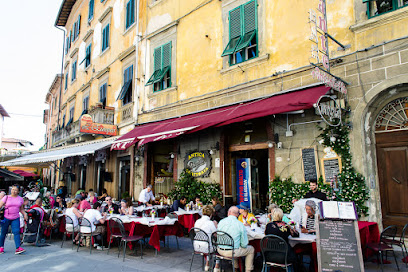
Gandhi Indian Restaurant Pisa
Experience authentic Indian flavors at Gandhi Indian Restaurant Pisa – a must-visit culinary gem offering vegan options and delightful takeout.

Cantina Vasari
Experience authentic Tuscan cuisine at Cantina Vasari in Pisa - savor traditional meat dishes in a warm and inviting atmosphere.

Ristoro Pecorino
Discover Ristoro Pecorino: A Tuscan bistro in Pisa offering delicious gluten-free and vegetarian dishes amidst a cozy atmosphere.

Il Peperoncino
Savor authentic Italian flavors at Il Peperoncino in Pisa—where every dish is crafted with passion and tradition.

Ristorante alle Bandierine
Experience authentic Italian cuisine at Ristorante alle Bandierine in Pisa – where tradition meets flavor.

Il Ristoro della Pe'
Discover authentic Italian cuisine at Il Ristoro della Pe', a charming restaurant in Pisa offering delicious dishes and a warm atmosphere.

Kiste' - La Pizza Artigianale......It's the second restaurant coming from the tower.
Experience authentic artisanal pizza at Kiste' in Pisa – where traditional flavors meet warm hospitality.

Ristorante La Buca
Experience authentic Italian cuisine at Ristorante La Buca in Pisa, featuring fresh seafood and Tuscan specialties in a warm atmosphere.
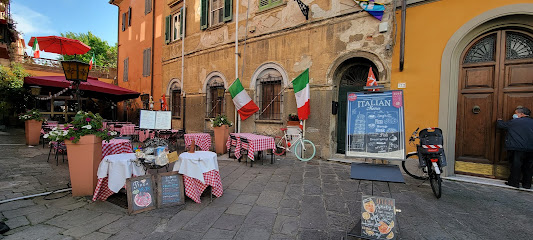
Trattoria Sant'Omobono
Discover authentic Tuscan cuisine at Trattoria Sant'Omobono in Pisa - where tradition meets flavor in every dish.

Ristorante Capodimonte Pisa
Experience authentic Italian cuisine at Ristorante Capodimonte in Pisa, where every dish tells a story of flavor and tradition.

Markets, malls and hidden boutiques
Centro commerciale Pisanova
Discover a shopper's paradise at Centro Commerciale Pisanova in Pisa, Italy, featuring diverse stores, dining options, and a vibrant atmosphere.

OVS
Explore the vibrant fashion scene at OVS in Pisa, offering stylish clothing and accessories for every member of the family.

Scarpamondo
Discover Italian fashion at Scarpamondo, where stylish footwear and clothing for the whole family await in the heart of Pisa.
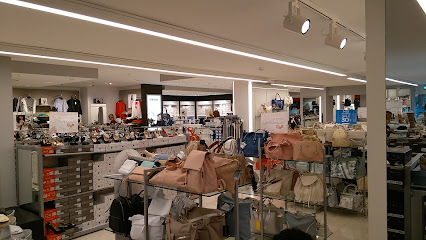
Arcadia Di Bartalini Fabio
Explore Arcadia Di Bartalini Fabio in Pisa, a vibrant comic book store featuring collectibles, costumes, and games that every fan will adore.
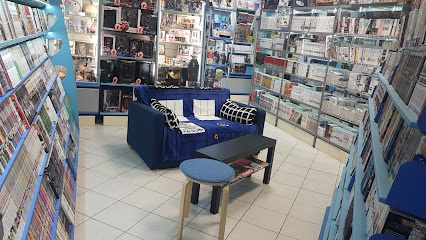
Dungeon Street
Explore the ultimate gaming paradise at Dungeon Street in Pisa - where every game lover's dream comes to life with comics and miniatures.

Sun City Pisa
Explore the vibrant world of Sun City Pisa, a premier gift and toy store filled with unique treasures and charming souvenirs for all ages.

Desigual
Explore Desigual in Pisa for unique and vibrant fashion that captures the essence of Italian style and creativity.

Tezenis
Discover stylish clothing for everyone at Tezenis in Pisa, where affordability meets fashion in a vibrant shopping experience.

Pisa Store
Explore the best selection of athletic apparel at Pisa Store, the go-to destination for sportswear enthusiasts in the heart of Pisa.
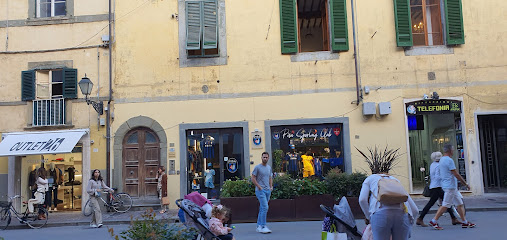
Dan John Pisa
Discover the ultimate men's clothing experience in Pisa at Dan John, where style meets quality in every piece.

Specialità Griffy
Explore the best of Italian wines and gourmet products at Specialità Griffy, a must-visit destination in Pisa for food lovers.

Valenti - Accessori Donna
Explore Valenti - Accessori Donna in Pisa for exquisite women's fashion accessories that blend style, quality, and local charm.

Antonia Nicoletti AEN69 – Creazioni Artigianali in pelle Made in Italy
Discover exquisite handcrafted leather goods at Antonia Nicoletti in Pisa, where Italian craftsmanship meets timeless style.

Emporio Armani Pisa
Explore the elegance of Emporio Armani Pisa, where high fashion meets luxurious shopping in the heart of Tuscany.

Il Borgo
Discover a unique shopping experience at Il Borgo in Pisa, where local crafts, exquisite chinaware, and festive treasures await every visitor.

Essential bars & hidden hideouts
Orzo Bruno Pisa
Discover the vibrant atmosphere and artisan beers of Orzo Bruno in Pisa, a brewpub that embodies the heart of Italian brewing culture.
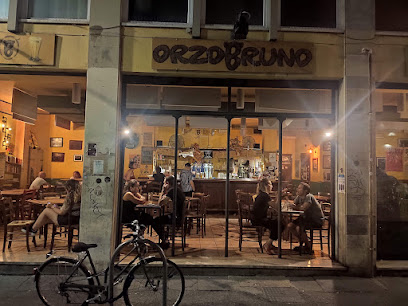
Skyline American Bar
Immerse yourself in the lively atmosphere of Skyline American Bar in Pisa, where expertly crafted cocktails and vibrant nightlife await.
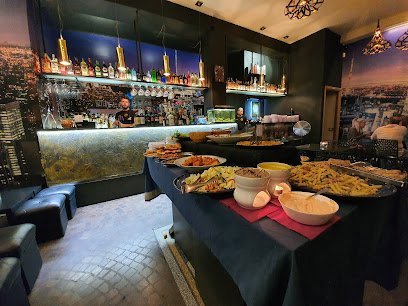
Bar Mocambo
Experience the vibrant atmosphere and local flavors at Bar Mocambo, the heart of Pisa's nightlife.

Bar Caffe Enrico
Discover the charm of Pisa at Bar Caffe Enrico, a local favorite offering delightful beverages and a welcoming atmosphere.

Chupiteria
Discover Chupiteria in Pisa, a lively bar known for its unique shot cocktails and vibrant nightlife, perfect for an unforgettable evening out.

The Violin Irish Pub
Discover The Violin Irish Pub, where authentic Irish culture meets the historic charm of Pisa, offering a delightful pub experience with great food and drinks.

JEFFER cocktails & friends
Experience the vibrant nightlife of Pisa at JEFFER Cocktails & Friends, where unique cocktails meet a lively atmosphere along the scenic Arno River.

Barrique Cocktail
Discover the vibrant nightlife of Pisa at Barrique Cocktail, where expertly crafted drinks and a lively atmosphere await every visitor.

Enobirreria L'Etrusco
Discover the vibrant craft beer scene at Enobirreria L'Etrusco, a must-visit pub in Pisa with an extensive selection of brews and a lively atmosphere.

SPRITZMANIA
Discover SPRITZMANIA, the vibrant bar in Pisa, renowned for its exquisite spritz cocktails and a welcoming lounge atmosphere.

Eleven Café - Cocktail Bar Pisa
Discover Eleven Café in Pisa - a vibrant cocktail bar and café perfect for relaxation and socializing amidst the city's charm.

Tree
Experience the vibrant nightlife at Tree Cocktail Bar, where expertly crafted cocktails and a welcoming ambiance await you in the heart of Pisa.

Caffetteria Carraia Del Nicchio
Discover the heart of Pisa at Caffetteria Carraia Del Nicchio, where exceptional coffee meets creative cocktails in a cozy setting.

Scaccomalto - Tap Room
Discover the vibrant flavors of Italian craft beer at Scaccomalto - Tap Room in Pisa, a true haven for beer lovers.

Baribaldi Pisa
Discover the vibrant spirit of Pisa at Baribaldi, a cocktail bar where creativity meets tradition in every sip.

Travel experiences inspired by this city
Explore more travel diariesLocal Phrases
-
- HelloCiao
[chow] - GoodbyeArrivederci
[ah-ree-veh-dehr-chee] - YesSì
[see] - NoNo
[noh] - Please/You're welcomePer favore/Prego
[pehr fah-voh-reh/preh-goh] - Thank youGrazie
[grah-tsyeh] - Excuse me/SorryScusi/Mi dispiace
[skoo-zee/mee dee-spyah-cheh] - How are you?Come stai?
[koh-meh stai] - Fine. And you?Bene. E tu?
[beh-neh. eh too] - Do you speak English?Parli inglese?
[pahr-lee een-gleh-zeh] - I don't understandNon capisco
[nohn kah-pee-skoh]
- HelloCiao
-
- I'd like to see the menu, pleaseVorrei vedere il menù, per favore
[vohr-ray veh-deh-reh eel meh-noo, pehr fah-voh-reh] - I don't eat meatNon mangio carne
[nohn mahn-joh kahr-neh] - Cheers!Salute!
[sah-loo-teh] - I would like to pay, pleaseVorrei pagare, per favore
[vohr-ray pah-gah-reh, pehr fah-voh-reh]
- I'd like to see the menu, pleaseVorrei vedere il menù, per favore
-
- Help!Aiuto!
[ah-yoo-toh] - Go away!Vai via!
[vah-ee vyah] - Call the Police!Chiama la polizia!
[kyah-mah lah poh-lee-tsya] - Call a doctor!Chiama un medico!
[kyah-mah oon meh-dee-koh] - I'm lostMi sono perso
[mee soh-no pehr-soh] - I'm illSto male
[stoh mah-leh]
- Help!Aiuto!
-
- I'd like to buy...Vorrei comprare...
[vohr-ray kohm-prah-reh] - I'm just lookingSto solo guardando
[stoh soh-loh gwar-dahn-doh] - How much is it?Quanto costa?
[kwahn-toh koh-stah] - That's too expensiveÈ troppo caro
[eh troh-poh kah-roh] - Can you lower the price?Puoi abbassare il prezzo?
[pwoh-ee ahb-bahs-sah-reh eel preh-tsoh]
- I'd like to buy...Vorrei comprare...
-
- What time is it?Che ora è?
[keh oh-rah eh] - It's one o'clockÈ l'una
[eh loo-nah] - Half past (10)Sono le dieci e mezza
[soh-no leh dyeh-chee eh meh-tzah] - MorningMattina
[mah-ttee-nah] - AfternoonPomeriggio
[poh-meh-ree-joh] - EveningSera
[seh-rah] - YesterdayIeri
[yeh-ree] - TodayOggi
[oh-djee] - TomorrowDomani
[doh-mah-nee] - 1Uno
[oo-noh] - 2Due
[doo-eh] - 3Tre
[treh] - 4Quattro
[kwah-troh] - 5Cinque
[cheen-kweh] - 6Sei
[seh-ee] - 7Sette
[seht-teh] - 8Otto
[oh-ttoh] - 9Nove
[noh-veh] - 10Dieci
[dyeh-chee]
- What time is it?Che ora è?
-
- Where's a/the...?Dov'è un/il...?
[doh-veh oon/eel] - What's the address?Qual è l'indirizzo?
[kwahl eh leen-dee-reet-soh] - Can you show me (on the map)?Puoi mostrarmi (sulla mappa)?
[pwoh-ee mohs-trahr-mee (sool-lah mahp-pah)] - When's the next (bus)?Quando passa il prossimo (autobus)?
[kwahn-doh pahs-sah eel prohs-see-moh (ow-toh-boos)] - A ticket (to ....)Un biglietto (per ....)
[oon bee-lyet-toh (pehr)]
- Where's a/the...?Dov'è un/il...?
History of Pisa
-
Pisa's origins date back to the 5th century BC when it was established as a maritime town by the Etruscans. The city quickly became an important port, benefiting from its strategic location near the mouth of the Arno River and the Tyrrhenian Sea.
-
Under Roman rule, Pisa flourished as a vital naval base and trade hub. The city was integrated into the Roman Empire around 180 BC. Roman engineers enhanced the city's infrastructure, building roads, bridges, and aqueducts that cemented its status as an essential logistic and commercial center.
-
During the Middle Ages, Pisa rose to prominence as one of the four Maritime Republics of Italy. From the 11th to the 13th centuries, it established a powerful fleet, engaging in trade and military expeditions across the Mediterranean. Pisa's prosperity during this period is evidenced by the construction of its iconic buildings, including the Leaning Tower, the Cathedral, and the Baptistery in the Piazza dei Miracoli.
-
Pisa played a significant role in the Crusades, providing ships and supplies for the campaigns to the Holy Land. The city's maritime prowess allowed it to gain considerable influence and wealth from the crusading activities, further solidifying its status as a dominant maritime power.
-
The rivalry between Pisa and Genoa culminated in the Battle of Meloria in 1284, where Pisa suffered a devastating defeat. This loss marked the beginning of the decline of Pisa's naval supremacy, leading to economic hardship and loss of territories to neighboring powers.
-
In the early 15th century, Pisa fell under the control of the Republic of Florence. The city was besieged and eventually surrendered in 1406. Under Florentine rule, Pisa's significance as a maritime power diminished, but it remained an important academic and cultural center.
-
During the Renaissance, Pisa experienced a cultural revival, largely driven by the University of Pisa, established in 1343. The university attracted scholars and students from across Europe, fostering advancements in arts, sciences, and humanities. Despite political changes and economic challenges, Pisa continued to be a vibrant intellectual hub.
-
In the 19th and 20th centuries, Pisa underwent significant urban development and modernization. The city played a role in the unification of Italy and saw growth in its infrastructure and economy. Today, Pisa is renowned for its historical landmarks, particularly the Leaning Tower, and continues to be a center for education and tourism.
Pisa Essentials
-
Pisa is well-connected by air, rail, and road. The nearest airport is Pisa International Airport (Galileo Galilei Airport), which offers flights to various European destinations. The airport is just a short taxi ride or a 10-minute train journey from the city center. Pisa Centrale, the main railway station, provides convenient train services to major Italian cities such as Florence, Rome, and Milan. If you prefer to drive, Pisa is accessible via the A11 and A12 motorways.
-
Pisa is a walkable city with many attractions located close to each other, making walking an excellent option for getting around. For longer distances, the local bus service operated by Compagnia Pisana Trasporti (CPT) covers the city and surrounding areas. Taxis are readily available but can be more expensive. Renting a bike is also a popular way to explore the city. If you plan to visit nearby cities, the train service from Pisa Centrale is both efficient and economical.
-
The currency used in Pisa is the Euro (EUR). Credit and debit cards are widely accepted in hotels, restaurants, and shops. However, it is advisable to carry some cash for smaller establishments, markets, and public transport. ATMs are plentiful, especially in the city center and tourist areas.
-
Pisa is generally a safe city, but like any tourist destination, it is important to stay vigilant. Be cautious of pickpockets, particularly in crowded areas such as the Piazza dei Miracoli and the central train station. Avoid poorly lit areas at night and be mindful of your belongings at all times. The neighborhood of Stazione Leopolda has been noted for higher crime rates, so exercise additional caution if you need to pass through this area.
-
In case of emergency, dial 112 for immediate assistance. Pisa has several hospitals and medical facilities, including the Azienda Ospedaliero Universitaria Pisana. Pharmacies are easily found throughout the city for minor health issues. It is recommended to carry travel insurance that covers medical emergencies.
-
Fashion: Do dress smartly when visiting restaurants and cultural sites. Avoid beachwear outside of beach areas. Religion: Do respect religious sites by covering your shoulders and knees. Don't take photos during services. Public Transport: Do validate your bus ticket before boarding. Don't be loud or disruptive. Greetings: Do greet people with a friendly 'Buongiorno' (Good morning) or 'Buonasera' (Good evening). A handshake is common. Eating & Drinking: Do try local dishes and wines. Don't rush through meals; dining is an important social activity.
-
To experience Pisa like a local, visit the markets such as the Mercato di Piazza delle Vettovaglie for fresh produce and local delicacies. Enjoy a leisurely stroll along the Arno River or relax in one of the city's many parks, like the Giardino Scotto. For authentic dining, venture into the smaller trattorias and osterias away from the main tourist areas. Don't miss the chance to attend a local festival or event, such as the Luminara di San Ranieri in June, where the city is illuminated by thousands of candles.
Trending Landmark in Pisa
-
Leaning Tower of Pisa
-
Piazza del Duomo
-
Cattedrale di Pisa
-
Piazza dei Cavalieri
-
Chiesa di Santa Maria della Spina
-
Battistero di San Giovanni
-
Tuttomondo (Keith Haring)
-
Museo delle Navi Antiche di Pisa
-
San Piero a Grado
-
Chiesa di Santa Caterina d'Alessandria
-
Camposanto
-
Lungarni di Pisa
-
Sinopie Museum
-
Chiesa di San Michele degli Scalzi
-
National Museum of San Matteo
Nearby Cities to Pisa
-
Things To Do in Lucca
-
Things To Do in San Gimignano
-
Things To Do in Florence
-
Things To Do in Cinque Terre
-
Things To Do in Siena
-
Things To Do in Modena
-
Things To Do in Bologna
-
Things To Do in Parma
-
Things To Do in Arezzo
-
Things To Do in Montepulciano
-
Things To Do in Genoa
-
Things To Do in Chiesanuova
-
Things To Do in Ravenna
-
Things To Do in Acquaviva
-
Things To Do in San Marino















